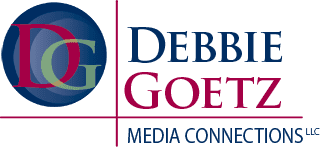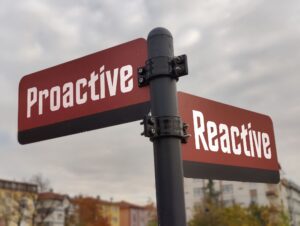Reactive vs. Proactive PR: What’s the Difference—And Which One Is Better?
When it comes to public relations, strategy isn’t just important—it’s everything. One of the biggest decisions a brand or business must make is whether to lean into reactive PR or proactive PR. These two approaches serve very different purposes, and knowing when (and how) to use them can shape how your audience sees you.
At Debbie Goetz Media Connections, we believe in helping you stay ahead of the narrative—while being prepared to handle anything that comes your way. So let’s dive in.
✅ What Is Reactive PR?
Reactive PR is your response to an event after it happens. It often involves managing a crisis, responding to negative press, or addressing unexpected situations. This type of PR is focused on damage control and reputation management.
Common examples of reactive PR:
- Addressing a product recall or service issue
- Responding to a viral customer complaint
- Releasing a statement during a public controversy
- Clarifying misinformation in the media
Reactive PR requires quick, thoughtful responses. It’s your brand’s voice during high-stress, high-visibility moments.
🎯 What Is Proactive PR?
Proactive PR is all about planning ahead. It involves intentionally creating opportunities for positive media exposure and relationship-building. Proactive PR helps you build your brand reputation over time and share your message with the world—on your own terms.
Common examples of proactive PR:
- Pitching stories to the media
- Sending out press releases for product launches or events
- Hosting community-focused events
- Publishing thought leadership content or executive interviews
When done right, proactive PR sets the stage for long-term visibility and trust.
🆚 Reactive PR vs. Proactive PR: Is One Better?
In short—no. It’s not a matter of which is better, but when to use each.
Think of it this way:
- Reactive PR is your fire extinguisher—you need it when things heat up.
- Proactive PR is your foundation—it supports long-term growth and visibility.
The most effective PR strategies combine both approaches. You want to be prepared for the unexpected (reactive), while consistently shaping your narrative and brand image (proactive).
💡 Why You Need Both
If your business only relies on reactive PR, you’re always playing defense. You may protect your brand from fallout—but you’re missing out on opportunities to grow your audience, build relationships, and lead your industry.
Likewise, if you only focus on proactive PR and neglect your crisis response plan, a single misstep could cost you hard-earned trust.
Balanced PR strategy = protection + promotion.
It means being ready for the worst while planning for the best.
✨ Final Thoughts from Debbie Goetz Media Connections
At Debbie Goetz Media Connections, we help brands navigate both sides of PR with confidence. From proactive storytelling to strategic crisis management, we’ll make sure your message is clear, compelling, and well-timed—no matter the circumstances.
Want help building a custom PR plan?
📩 Contact us today and let’s start the conversation.

